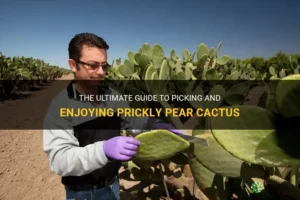Are you facing the perplexing challenge of replanting a cactus without roots? If so, you’re not alone. Countless cactus enthusiasts encounter this predicament, often resulting from transplant shock, rot, or even an unfortunate accident. But fear not; there are effective strategies that can facilitate the successful transplantation of a rootless cactus. Understanding the procedures and care necessary for these hardy plants can lead to a thriving specimen once again.
In this comprehensive guide, we will delve into the best methods for replanting a rootless cactus, exploring essential techniques and care tips that will give your cactus the best chance at survival and growth.
First, let’s examine the vital reasons why a cactus might find itself without roots.
Why Do Cacti Lose Their Roots?
Cacti, despite being hardy survivors, experience root loss for various reasons. One common cause is overwatering. Excessive moisture can lead to root rot, a grave ailment that can decimate even the most resilient of species. Additionally, physical damage during handling or transplanting can sever roots, leaving your cactus stranded.
Environmental factors also play a critical role. Too much sunlight or insufficient warmth—particularly during their dormant seasons—can impair root health. Lastly, pests and diseases may attack the root system, causing decay and resulting ultimately in loss. Understanding these causes can help prevent future mishaps and prepare you for a successful replanting.
Assessing the Situation
Before embarking on the transplantation journey, thorough assessment of the cactus is crucial. Examine the plant closely. Look for signs of distress, such as yellowing, mushiness, or discoloration. If the cactus has been damaged due to rot, it may necessitate a more radical approach—cutting away any affected sections before attempting to replant.
Once you’ve addressed any rot, you can then determine if your cactus is ready for replanting. A healthy, firm cactus will typically handle the process more efficiently than a weakened one, so patience may be necessary as you work toward revival.
Choosing the Right Environment for Transplanting
The environment you create for your cactus post-transplantation is paramount. Selecting a suitable pot is the first step. Ensure that it has ample drainage holes to prevent water accumulation. Terracotta pots are often favored for cacti, as their porous nature allows evaporation, thus reducing the risk of rot.
Next, consider the potting mix. A specialized cactus mix, which is well-draining and sandy, will facilitate healthy growth. Alternatively, you may opt to create your own mix, incorporating components such as perlite, coarse sand, or pumice for aeration. The ideal blend will discourage moisture retention and ensure the roots, when they develop, have plenty of oxygen to thrive.
Step-by-Step Guide to Replanting a Rootless Cactus
Now that you’re well-informed and prepared, let’s walk through the actual process of replanting your rootless cactus.
Step 1: Prepare the Cactus
Begin by allowing the cut end of your cactus to callous. This means placing it in a warm, dry area for several days to a week. This process is crucial as it helps to reduce the risk of infection and prepares the cactus for the subsequent steps.
Step 2: Choose a Pot and Mix
Select your pot and prepare your drainage-friendly potting mix. Fill the pot approximately two-thirds full with the mix, ensuring it is level and relatively loose. The objective is to avoid compacting the soil, as cacti thrive in a well-aerated medium.
Step 3: Position the Cactus
Once the cactus has formed a callous, place it upright into the center of the pot, ensuring that it sits securely above the soil level. Do not bury the cactus; instead, allow the base to rest just above the mix. At this stage, ensure it stands straight and stable.
Step 4: Support the Cactus
If your cactus is top-heavy or particularly small, consider using stakes or other supportive structures to stabilize the plant until roots begin to form. This precaution helps prevent tipping and additional stress on the cactus.
Step 5: Water with Care
After planting, wait at least a week before watering. This delay allows the cactus to adjust and encourages root development. Once you do initiate watering, do so sparingly, allowing the soil to dry out completely between waterings. Cue the excitement—this is just the beginning of your cactus’s journey toward recovery!
Ongoing Care and Considerations
Be vigilant in your care routine. Monitor your cactus for any further signs of stress or growth. Providing ample light is crucial—many cacti thrive in bright, direct light but be cautious of overexposure after replanting.
Fertilizing during the growing season, typically spring through summer, can also bolster recovery and promote root growth. A balanced, diluted fertilizer suited for cacti can enhance nutrient uptake when it has stabilized.
In conclusion, the journey of replanting a cactus without roots may seem daunting, but with thoughtful preparation and care, it can lead to a rewarding experience. Your cactus is resilient—it simply requires some assistance and a nurturing environment to thrive once again. So, roll up your sleeves and embark on this horticultural venture—you might just find yourself enthralled by the resilience of nature!




Leave a Comment